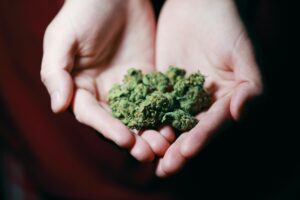Canada is one of the few nations in the world to legalize the recreational use of cannabis—here we’ll provide a timeline leading up to that historic moment. It’s important to understand the challenges and triumphs that Canadians have faced in the journey to legalization, in order to deeper understand the nation’s history.
Hemp in 17th Century Turtle Island
1600: In the 17th century, First Nations communities used cannabis and hemp in what is now called Turtle Island. They used the plant to make all sorts of tools and items: clothing, fishing nets, textiles, and more. Long before Europeans colonized Canada, First Nations communities were harvesting, selling, and trading hemp.
The evidence of cannabis plants in 17th Century North America is extensive, and there are numerous reports of European explorers writing about hemp in Canada specifically—mostly in journal entries. Samuel DeChamplain wrote of hemp being used to tie fishing hooks in 1605.In a 2021 interview with the Native Women’s Association of Canada, Elder Alvin says of cannabis use on Canadian soil, “…it has always been here.”
Prohibition and the First Anti-Drug Law
1908: Canada passed The Opium Act in 1908, the nation’s first anti-drug law. It is thought that this law was not set in place to reduce drug use and was instead a way to maintain social order and reduce immigration to Canada. University of British Columbia historian, Henry Yu, believes The Opium Act was created to portray the negative effects of drugs as an immigration issue.
1923: In 1923, Canada added cannabis to The Opium Act, criminalizing possession, cultivation, and trafficking. While cannabis use rates were low in Canada at the time, there is speculation that the addition of Cannabis to The Opium Act was fueled by more anti-immigrant narratives.
1933: Curiously, the first arrest for cannabis possession was 10 years after initial prohibition in 1933. In 1961, Canada classified marijuana possession as a Schedule 1 offense, punishable by up to seven years in prison.
Shifting Attitudes and the War on Drugs
1968: In 1968, cannabis use exploded. Its popularity was attributed to the hippie movement and the younger generations’ newfound interest in the plant. With only 25 convictions in the previous 16 years, the number jumped to 2300 that year alone.
1972: In 1972, the Le Dain Commission performed a study on the effects of cannabis due to the hike in popularity. They concluded that prohibition was too costly for individuals and the nation and pushed for decriminalization of the substance.
The government opposed decriminalization, marking the beginning of the war on drugs in Canada. Prime Minister Brian Mulroney announced a $210 million dollar anti-drug strategy. Critics and opposing parties claimed the strategy was a tool to gain political favour.1996-2001: Terry Parker was arrested in 1996 for cultivating cannabis to treat his epileptic seizures. This eventually led to the 2000 Ontario Court of Appeal decision to uphold Parker’s right to cultivate cannabis for medical purposes, creating the landmark end to the medical prohibition of cannabis use in Canada. The Marijuana Medical Access Regulations (MMAR) were introduced by the Canadian government in 2001, making cannabis available for medical purposes.
The Road to Legalization
2018: On October 17, 2018, Canada became the second nation in the world to legalize recreational cannabis on a federal level—a turning point in Canadian history. The Cannabis Act, also known as Bill C-45, sought to control the cultivation, sale, and use of cannabis while putting the needs of the general population first. Adults 18 years or older (depending on the province) could possess, cultivate, and buy cannabis legally.
Challenges and Ongoing Developments
2019: In 2019, Canada launched a program for Canadians with a criminal record for Cannabis possession to apply for a pardon. Unfortunately, only 395 people have been pardoned, despite around 10,000 Canadians being eligible. Critics say the program has been inaccessible thus far and requires major improvements in order to succeed.By 2022, the legal sale of cannabis in Canada reached $11 billion. The evolution of Canada’s legalization of cannabis shows a shift in public opinion, an increase in medical applications for cannabis, and a demonstration of evidence-based policymaking. Despite numerous challenges, Canada has set an example for how progressive decriminalization of Cannabis can truly benefit a nation.
© Kanab Inc. – Kanab Inc. is a Toronto based cannabis retail company that honors the historical significance and uses of the cannabis plant across cultures and civilizations. Kanab has now opened its first cannabis dispensary at the intersection of Don Mills Road and York Mills Road in North York region of Toronto, Ontario (South of 401, West of 404 / Don Valley Parkway, and East of Leslie). For more info, please visit: kanab.ca









